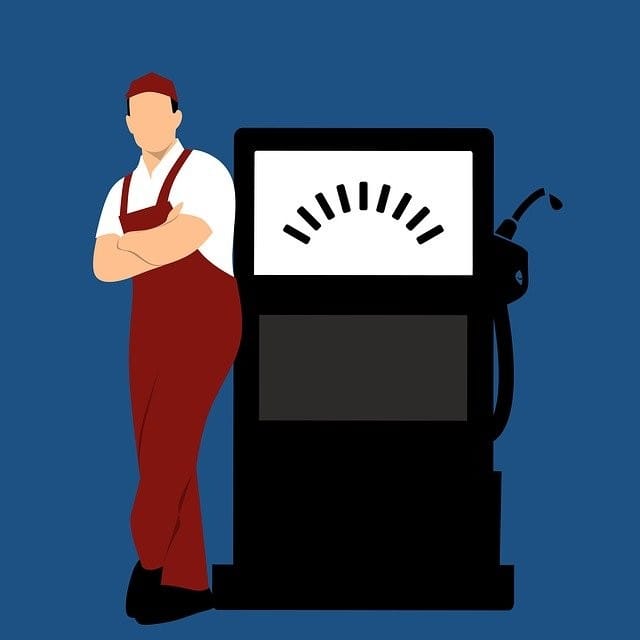So you’re here because you heard about Nyan Cat. Or maybe it was Grimes’ collection of weird demon baby cherub things. Or something having to do with Lindsay Lohan. Whatever the reason, you’ve decided you’re going to make hay while the crypto sun shines, you’ve got the art skills to do it, and the only thing you’re missing is the crypto know-how to get your work up there where the kind of people who will pay hundreds of thousands of dollars for a GIF can smile upon your work and maybe cough up a few grand your way.
Well, you’re in luck, because we simplified the whole process into a few easy steps that will have your own bizarre crypto art immortalized on the blockchain in no time.
How to Make and Sell NFT Art
Down below, we will take you step-by-step through the process of turning your beloved artwork into a newly-minted NFT that will outlive us all on the Ethereum Blockchain. We say Ethereum because, at least for the time being, Ethereum is the prime blockchain for selling and trading NFTs.
Step 1: Create Some Art

The first thing you’ll have to do when setting out to sell some NFT art is, well, create some art of your own. This can be almost any form of media — GIFs, illustrations, videos, 3D models and the like. A short stroll through Rarible or Foundation will give you an idea of the general Inclinations in crypto Art. Currently, there seems to A preference for either very avant-garde, experimental abstract art or meme-heavy internet culture references. Not that that should necessarily inform your work — we won’t be wading into the “creation for the market” debate right here. Once you’ve settled on the kind of art you’d like to upload, you’re free to move on to the next step.
Step 2: Set Up an Ethereum Wallet

There are numerous wallets out there to choose from to serve as your public address and store your private key, but it is generally recommended to rely on a hardware wallet. If you need help choosing the best wallet for you, we made detailed comparisons between the best-selling hardware wallets in our Trezor vs Ledger breakdown, as well as an examination of the Ledger Nano S vs X.
In case you are new to cryptocurrency, here’s a quick crash course on how crypto wallets work: They are essentially software or hardware that help you operate a public address on your cryptocurrency’s blockchain. This public address is what stores the cryptocurrency and is viewable by all, though its ownership is completely anonymous (unless you make it otherwise). Every public address has a private key that is used to deposit, withdraw, or send funds to and from the address. Think of it as a mailbox: everybody can see it, knows where it is, and can send mail to it. But only the person with the key to the mailbox can open it and retrieve what’s inside.
There are two types of wallets: Hot Wallets which are connected to the Internet and provide greater convenience to the user at the expense of lesser security, and Cold Wallets which Store your information offline and are less convenient for frequent use but provide much greater security to the user. A popular example of a hot wallet is the commonly used MyEtherWallet, while the best examples of cold wallets are the hardware-based wallets from Trezor or Ledger that we mentioned above — and also pen and paper. Yes,good ol’ pen and paper can function as a cold wallet as well, though you’ll need to generate your own public addresses which can be a pain.
We recommend MyEtherWallet or Metamask for new users who are new to crypto and only looking to put their work up for sale, or any of the Trezor/Ledger hardware wallets for those interested in storying crypto in general (as well as those who have made a sale of significant value and would like to keep their earnings safe!).
Note that Foundation only connects to Metamask.
Step 3: Buy Some Ether

In the maelstrom of news and surging interest in NFTs, it may be news to you that putting an NFT up for sale will actually cost you some money. This is because of how the Ethereum blockchain works: Unlike Bitcoin, in which miners are rewarded with Bitcoin for contributing the computing power necessary to verify transactions and add their record to the blockchain, Ethereum miners are paid with a different currency on the blockchain known as gas.
Whenever you are looking to confirm a transaction and added to the blockchain, a transaction fee is paid (ostensibly to cover the gas and platform fee) — Ethereum miners are able to pick and choose what contracts they would like to expend the computer power on and thus the more gas you pay for your transaction, the faster your contract will be carried out and added to the blockchain. This includes uploading your NFT.
So you will want to buy some Ether in order to purchase the gas and pay the transaction fee. Transaction fees fluctuate pretty wildly, but are overall significantly lower than they were A month or two ago when Ether started its bullrush to $2000.
Step 4: Choose a Marketplace

Once you have your art, your wallet, and some Ether burning a hole in your pocket, you are ready to put your NFT to market. What do you want to do is head over to ethereum.org and take a look at their selection of dApps — short for decentralized apps. Rarible, Nifty Gateway, and Foundation are some good starting points to get a handle on the Ethereum market and some eyeballs on your own NFT. Each one caters to a slightly different taste so make sure to check all three of them, as well as the many other market places, before settling on one.
Foundation seems to be the best for digital painting, while Nifty Gateway caters most to 3D models and Rarible seems to be a chaotic mix of the aforementioned of Avant-Garde/Internet meme culture fusion.
Related: Best NFT Marketplace Websites Online
Step 5: Upload Your Art

While each platform will differ in where you click the actual button, they all start with connecting your crypto wallet. Each of the major sites will automatically create an account associated with your wallet and guide you through a relatively simple upload process in which you have to choose how many “copies” of your NFT you’d like to mint and what percentage you’d like your royalties to be whenever the item is resold.
This latter feature is an innovative leap forward for digital artists who, unlike their traditional counterparts, could never truly limit the supply of any one work once dispensed nor produce a true “original.” An NFT essentially comes with a blockchain-printed certificate of authenticity that proves its originality as the original work, making it possible for the original artist to get a cut of every subsequent trade/sale — a feature even traditional artists can’t feasibly reap the benefits of. Once you’ve chosen the work, set your copies, and royalty fee, you’re ready to move on to the final step.
Step 6: Pay the Transaction Fee

With your NFT artwork locked and loaded, all you need to do is pull the trigger on the gas and you can sit back while your work is uploaded to the blockchain and becomes a unique entity on the network, immutable and invulnerable to any server collapse. The transaction fee will ensure that your NFT is mined by whichever Ethereum miner picks up the contract, pocketing your fee for their trouble.
After that, it should only be a matter of a couple minutes before your newly-minted NFT is up and on the market for just waiting to make the day of the keen-eyed patron who sees it first!
Any more NFT questions? Feel to shoot ’em at us down below. Otherwise, take a tour of our cryptocurrency archives for all your crypto-related needs.













Discussion